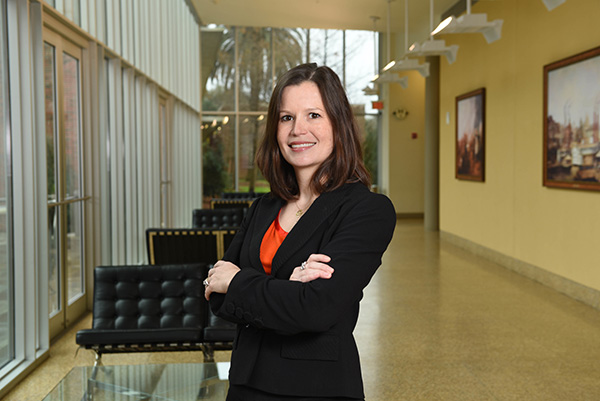
A new paper by Claire Senot, assistant professor of management science, could change the way we look at the health care “journey” of patients, especially the portion after the patient is discharged.
A great deal is known about patient outcomes, costs and quality of care inside the brick-and-mortar walls of a hospital, but very little is known about what happens when the patient leaves the facility, and that appears to have an equally significant impact on outcomes.
A new paper by Claire Senot, assistant professor of management science, could change the way we look at the health care “journey” of patients, especially the portion after the patient is discharged.
Senot’s paper, “Continuity of Care and Risk of Readmission: An Investigation into the Healthcare Journey of Heart Failure Patients, ” was recently accepted for publication in Production and Operations Management.
Senot ’s research specialty is the operations side of health care delivery. For her study, she chose to examine heart failure, not only because it’s one of the leading causes of hospitalization but also because over 20% of discharged heart failure patients are readmitted within 30 days. Senot was interested in discovering why so many patients return to the hospital.
“Typically, what policies have focused on is what the hospital does,” Senot says. “Mostly, how [care activities] affect clinical outcomes, like mortality or readmissions. Many policies have been implemented like value-based purchasing or readmission reduction programs. They put a lot of the responsibility of improving patient outcomes and reducing costs on the hospital.”
The main reason for that focus on hospitals is that inpatient care is the most costly part of the process, but Senot said it’s just one factor in patient outcomes. “In order to prevent [negative outcomes] from happening, everything that happens outside of the hospital also matters,” she says. “We really don’t know how much it matters, and the problem is that becomes very hard to analyze.”
To help solve that riddle, Senot turned to big data. Using data sets obtained from the Research Data Assistance Center, a Centers for Medicare and Medicaid Services contractor, Senot was able to track in detail the care provided to heart failure patients once they leave the hospital: Where they go, what doctors they see, what types of treatment they receive, and whether those visits were part of a network.
“The key difference here in the study — and something that made it more difficult but also, I believe, more valuable — is that I used patient-level data,” Senot says. “By being able to link all of these different episodes — everything that happened to this patient in a year — I was able to
reconstruct the patient’s journey.”
In all, Senot examined more than 44,000 individual “episodes” in the care of 3,263 patients in 2014. Distilling that much data was a major undertaking. Instrumental in helping Senot analyze such a massive dataset was Tulane University’s High Performance Computing system. Code-named Cypress, it’s one of the 10 fastest university supercomputers in the U.S.
“I had to use to Cypress so that I could even open and merge some of the datasets because they were so big,” she says, adding that Tulane is one of the few organizations with the computing power necessary to support her research. After analyzing the data, Senot found that negative outcomes were most often in part the result of inadequate continuity of care — care by multiple disconnected providers over time — rather than solely a lack of adequate care at the hospital level.
“The hospital cannot bear all of the responsibility of patient care, especially for patients with chronic conditions,” Senot says. “Those conditions need to be managed over time in a variety of settings. Hospitalization may not even need to occur if the condition is properly managed.”
Ultimately, Senot said she hopes the study will encourage and incentivize healthcare providers to work together in order to improve patient outcomes.

